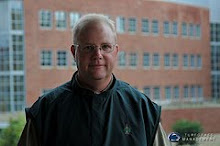As part of the Golf Course Turfgrass Management Program we are required to spend six months interning at a club between the 2nd and 3rd term. During my first meeting with Dr. Kaminski about one year ago, we sat down and discussed his "5 year plan" to achieving a superintendent's position. We also discussed goals and objectives that I wanted to attain. Since my goal was to ultimately be a superintendent hosting a major United States championship, our plan was for me to become associated with a championship golf club, a top superintendent, and the United States Golf Association. The decision came easy. I focused my sights on working for Matt Shaffer at Merion Golf Club in Ardmore, Pennsylvania. Merion Golf Club has hosted more national championships than any other club including most recently the 2009 Walker Cup. The 2013 United States Open will be the 19th USGA Championship marking 12 consecutive decades that Merion Golf Club has hosted a USGA Championship event. 
Opened in 1912, Merion (East Course) was designed by Hugh Wilson, an amateur/sportsman architect of the day and a member of Merion Cricket Club (MCC). Wilson was a member of an elite group of amateur/sportsman architects of the day that included C.B. Macdonald (National Golf Links of American); Herbert Leeds (Myopia Hunt Club); H.C. and W.C. Fownes (Oakmont Golf Club); and George A. Crump (Pine Valley Golf Club). These men devoted many years and in some cases decades to developing their respective golf courses. They were each members of their club and were not paid to oversee construction of their project. It is difficult to imagine anyone today being as dedicated as they were to the construction of a new golf course. The results are some of the most classic golf courses in the United States which have all stood the test of time.
Before construction of the East Course began, Wilson travelled to England and Scotland for seven months studying some of the great courses in the Old Country. Merion also enlisted the advice of Charles Blair Macdonald who met with Wilson, William Flynn (the fi rst greenkeeper of the East Course) and the Merion committee to discuss his concepts of classic golf course architecture.
rst greenkeeper of the East Course) and the Merion committee to discuss his concepts of classic golf course architecture.
Wilson and Flynn would spend the next thirteen years perfecting the course until Wilson's death in 1925. Flynn worked to continuously improve the East Course until 1934.
Interning at Merion Golf Club will certainly prove to be full of great experiences. I look forward to being part of all the great golf traditions that are truly Merion. Working under the direction of Mr. Shaffer will increase my knowledge and understanding of turfgrass management at a championship golf course and provide me with a solid foundation to grow and develop in the turfgrass industry.
With all the changes including the new maintenance facilities and the upcoming renovations to prepare for the 2013 United States Open Championship, it should be a very busy summer.

Opened in 1912, Merion (East Course) was designed by Hugh Wilson, an amateur/sportsman architect of the day and a member of Merion Cricket Club (MCC). Wilson was a member of an elite group of amateur/sportsman architects of the day that included C.B. Macdonald (National Golf Links of American); Herbert Leeds (Myopia Hunt Club); H.C. and W.C. Fownes (Oakmont Golf Club); and George A. Crump (Pine Valley Golf Club). These men devoted many years and in some cases decades to developing their respective golf courses. They were each members of their club and were not paid to oversee construction of their project. It is difficult to imagine anyone today being as dedicated as they were to the construction of a new golf course. The results are some of the most classic golf courses in the United States which have all stood the test of time.
Before construction of the East Course began, Wilson travelled to England and Scotland for seven months studying some of the great courses in the Old Country. Merion also enlisted the advice of Charles Blair Macdonald who met with Wilson, William Flynn (the fi
 rst greenkeeper of the East Course) and the Merion committee to discuss his concepts of classic golf course architecture.
rst greenkeeper of the East Course) and the Merion committee to discuss his concepts of classic golf course architecture.Wilson and Flynn would spend the next thirteen years perfecting the course until Wilson's death in 1925. Flynn worked to continuously improve the East Course until 1934.
Interning at Merion Golf Club will certainly prove to be full of great experiences. I look forward to being part of all the great golf traditions that are truly Merion. Working under the direction of Mr. Shaffer will increase my knowledge and understanding of turfgrass management at a championship golf course and provide me with a solid foundation to grow and develop in the turfgrass industry.
With all the changes including the new maintenance facilities and the upcoming renovations to prepare for the 2013 United States Open Championship, it should be a very busy summer.

Merion Golf Club East Course #18







No comments:
Post a Comment